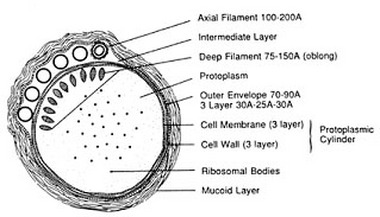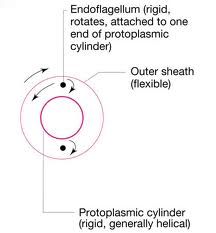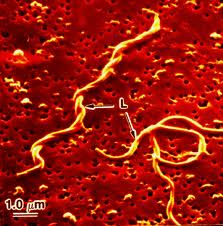Characteristics

The genome of Borrelia burgdorferi (B31 strain) was the third microbial genome ever to be sequenced and contains 910,725 base pairs as well as 853 genes. A prominent feature of B. burgdorferi is its complex genome, containing a linear chromosome approximately one megabase in size. The bacteria has 21 plasmids (12 linear and 9 circular), the largest number of plasmids found in any known bacterium. Culturing B. burgdorferi for a long time results in the loss of plasmids as well as changes in proteins. The loss of plasmids has to do with the loss in the ability of the organism to infect other animals, suggesting the plasmids encode key genes involved in virulence.

B. burgdorferi is much longer than wide, and often its width is unable to be seen under a light microscope. Therefore, most spirochetes cannot be viewed using a conventional light microscope, but a dark-field microscopy must be used. Dark field microscopy directs light toward an the bacteria at an angle, instead of from the bottom. As a result, particles or cells are seen as light objects against a dark background.
When Borrelia burgdorferi is Gram-stained, the cells stain a weak Gram-negative by default. Borrelia burgdorferi has an outer membrane that contains an LPS-like (lipopolysaccharide) substance, an inner membrane, and a periplasmic space that has a layer of peptidoglycan. Therefore, it has a Gram-negative bacterial type cell wall.
When Borrelia burgdorferi is Gram-stained, the cells stain a weak Gram-negative by default. Borrelia burgdorferi has an outer membrane that contains an LPS-like (lipopolysaccharide) substance, an inner membrane, and a periplasmic space that has a layer of peptidoglycan. Therefore, it has a Gram-negative bacterial type cell wall.

